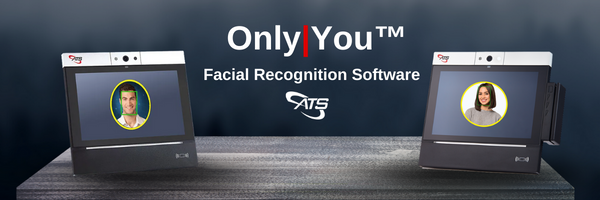 Looking to expand your time and attendance system to cater to a wider market with advanced technology? Want to enhance your customers' experience with your solution?
Looking to expand your time and attendance system to cater to a wider market with advanced technology? Want to enhance your customers' experience with your solution?
Integrate a physical facial recognition time clock with your WFM, ERP, or payroll system.
For many customers, a software-only timekeeping option falls short. Without a hardware clock choice, your solution might not make the cut for these potential clients.
Including a biometric time clock in your offerings positions your company to deliver a comprehensive and adaptable time and attendance solution.
The Downside of Software-Only Timekeeping Over Facial Recognition Time Clocks
Your customers' urge for reliable and affordable timekeeping solutions may lead them to accept a mobile or web-based time clock. This is a false economy as software-only timekeeping comes with hidden drawbacks and costs that undermine their experience with your solution.
#1: Software-based time clocks make it easy to buddy punch.
For some customers, the ability to punch in and out from a mobile phone app or desktop software increases fears of time theft. Workers may not be where they say they are. They can also punch in for other workers.
A face recognition time clock virtually eliminates employee buddy punching, the most common form of time theft. Since the employee’s face is their credential, your customers can be certain onsite workers can’t pad work hours.

#2: Dedicated desktops for timekeeping are costly and inefficient.
A huge part of your potential market has large hourly workforces who don’t work in front of a computer. This market includes service and industrial industries. These companies often have high employee counts, making them attractive prospects.
Asking them to rely on their software-based time clocks to punch in and out is risky for several reasons, not just time theft.
Many currently use dedicated desktops as virtual time clocks. These computers take up a lot of space, limiting where and how many can be installed.
Time clocks require minimal wall space and cost less than a computer. Your customers can buy and install them in all the most convenient places, expediting shift changes and maximizing productivity.
#3: Using punch cards undermines goals of automating time tracking
Another option for customers that don’t want to rely on a software time clock is to use old-school punch cards. Punch cards degrade the value of your system as a truly automated solution.
They still need to get collected and their information entered in your solution. Both steps are time consuming and error prone. Customers and prospects are looking for modern, fully automated solutions.
Facial Recognition Time Clocks Save Your Customers Money
A high-performance biometric time clock delivers direct and indirect financial benefits.
The high security of face recognition time clocks results in unparalleled accuracy in attendance records, ensuring that your customers don’t overpay for labor. Attendance data underlies many other workforce management functions, like scheduling and minimizing absenteeism. Having accurate attendance data improves your customers' ability to make cost-efficient scheduling decisions and to minimize attendance issues.

Physical, Face Recognition Time Clocks Resolve These Common Concerns
An integrated, physical time clock ensures that there are no data collection gaps when using your time and attendance system.
You can help your customers with these concerns by offering a time clock with biometric facial recognition technology, opening your company to a vast new world of prospects and sales pitches.
ATS can help you move into the biometric system market quickly with our time clock, the stride80, and its integrated facial recognition time clock software, Only|You™ Face.
Our system includes toolkits and utilities that make it easy to integrate the stride80 and Only|You ™ Face into your environment. We also provide a variety of tools that make deploying and managing physical time clocks easy and lucrative.
Talk to one of our consultants today, who can walk you through our Android-powered offering and how it will work with your solution.





